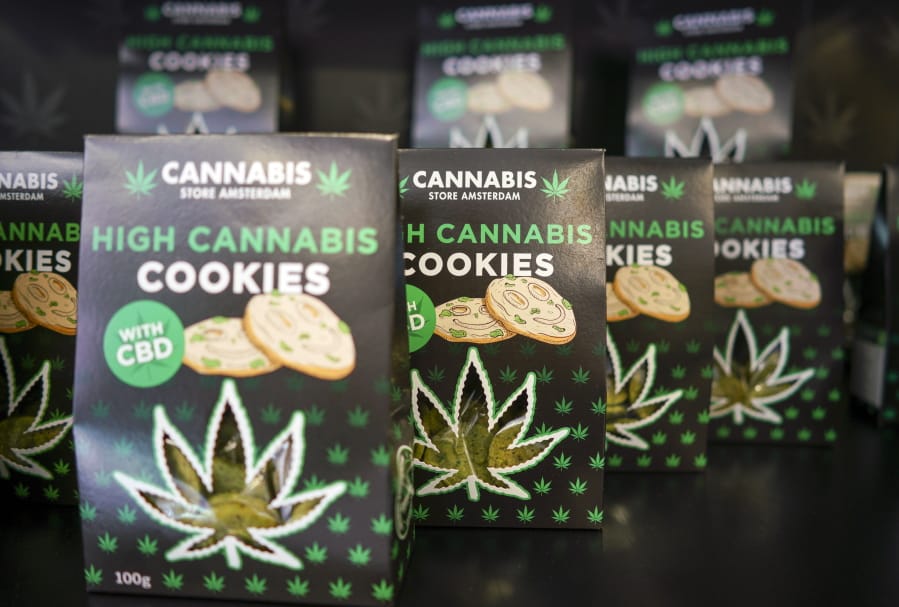ROME — It’s been called the Italian “green gold rush.” Mild, barely there marijuana dubbed “cannabis light” has put Italy on the international weed map, producing hundreds of stores that sell pot by the pouch and attention from investors banking the legalization of stronger stuff will follow.
The flourishing retail industry around cannabis light — weed so non-buzzy, it’s essentially the decaf coffee of marijuana — surfaced as an unintended by-product of a law meant to restore Italy as a top producer of industrial hemp. Now, storefronts that peddle chemically ineffective hemp flowers in varieties such as “Chill Haus” and “Black Buddha” are getting blowback that some Italians fear will nip business in the bud.
Italy’s highest court clouded the climate four weeks ago by ruling it was illegal to market hemp-derived products that weren’t “in practice devoid” of the power to provide a perceptible high. Sporadic testing and customer reviews suggested cannabis light outlets sold weed that weak. The law-and-order interior minister nonetheless declared war on the shops with neon leaf logos last month, vowing to close them “street by street, shop by shop” nationwide.
“It is neither possible nor acceptable that in Italy there are 1,000 shops where there are drugs legally, in broad daylight. This is disgusting,” said Matteo Salvini, who made keeping migrants out of Italy a primary focus after taking office a year ago.
Some business owners are ready to fight back. The owner of Green Planet in the southern city of Caserta chained himself to the fence around his locked shop this month after a raid in which police seized 16 grams of cannabis light. Gioel Magini, the owner of a Cannabis Amsterdam Store franchise in Sanremo, proposed a class-action lawsuit to keep the shops open and their owners from losing money.
“I closed a pizzeria to open this store. Now, they want us to go bankrupt,” Magini told Italian news agency ANSA. “It’s as if to fight alcoholism, the sale of non-alcoholic beer is banned.”
The commotion reflects the lag in Europe’s pro-marijuana movement compared to the recreational use frontiers of North America. The coffee shops in Amsterdam where tourists have gone since the late 1970s to purchase pot in public never took off outside the Netherlands. While more than 30 European countries have laws allowing medical marijuana in some form, patient advocates complain of high prices and inadequate supplies.
Enter “la cannabis light,” the catchy name Italians have for cannabis sativa plant derivatives with low levels of THC, the psychoactive compound in marijuana that causes a high. Hemp and marijuana are the same plant, but scientists classify dry plants with no more than 0.3 percent THC as hemp. In the 28-country European Union, of which Italy is a member, the cutoff is 0.2 percent. A December 2016 Italian law, however, set a domestic ceiling three times higher than that to give hemp farmers leeway for natural variations resulting from cultivation, according to Stefano Masini, a spokesman for Italy’s Coldiretti agriculture lobby.
Although 0.6 percent is just over the THC concentration required for hemp to become marijuana in a botanist’s book, Italian regulators assumed it was too low to have a mind-altering effect and its related consumer appeal. Entrepreneurs in a country with a lackluster economy nonetheless saw an opportunity.
The hemp law that took effect 2 1/2 years ago permitted sales of cosmetics and products made with hemp. Gift boutiques, corner markets and stand-alone grow shops soon stocked cannabis-infused pasta, olive oil and gelato, but also jars and bags of “light” buds. Since marijuana still was illegal, producers labeled the products as “collector’s items” not intended for consumption.
Rolling papers and glass pipes storekeepers might display nearby advertised otherwise.



